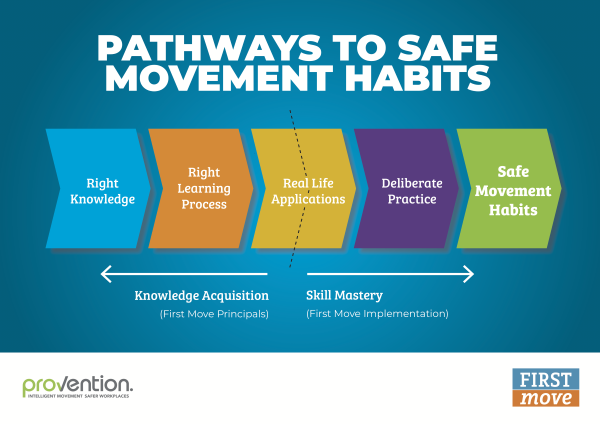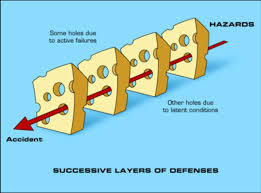3 Steps to Developing a Successful Safety Culture
What do crossing signals and Safety Culture have to do with each other? Anyone having a casual walk around Wellington New Zealand in the early months...
5 min read
Richard Warren
:
Mar 26, 2019 10:26:32 AM

At Intuto, we get the chance to work with all sorts of businesses, from small bars in the centre of the North Island of New Zealand through to performing arts schools based in New Jersey USA. Not surprisingly, having decided to work with Intuto, a cost effective online training platform, these businesses are all committed to improved staff performance. And let's be frank, while organisations all have the best intentions in the area of health and safety, looking to embed a really strong safety culture long term, ensuring that the organisation moves beyond intention to action and that the action carries on into the future, is one of the great challenges.
We are lucky enough to work with a wonderful company in the area of prevention of manual handling injuries. Provention has customers across a wide range of industries and works closely with these organisations teaching staff the principles of safe physical movement (physical intelligence), covering all aspects of manual handling. As the business leader, Alison Richmond recognises that for many people, their movement habits are unsafe, and this puts them at risk of strain and injury. Alison recognises that changing a habit takes more than just a one-off training session and this is much of the focus of Provention's work.
Provention take the approach that there are two distinct parts to any programme that will drive habit change.

Alison is clear that the first part of the habit change process is the easy bit. Embedding habit change is the challenging part. It's often this last part that is forgotten leaving the original intentions unsatisfied.
So what are some of the ways you can use to embed a long term positive change to an organisation's safety culture?
From researching a range of different training providers, the following standards seem to be generally accepted as key steps to embedding a positive health and safety culture and making sure it 'sticks' long term..
There is only one way to ensure that you achieve an organisationally wide safety culture truly embedded: Get Started.
And there is no point in getting started unless you know what direction you are heading. It is of course teaching one to, as they say in British Commonwealth linked jurisdictions, suck eggs, but unless you are of the "she'll be right' school of management, you'll already have a set of data that you can analyse to establish your risk points and from that you'll be very quickly able to set your organisation's Health and Safety Goals. Just make sure you do it.
Make sure your communication is relevant to your organisation. Don't just send out a note and expect everyone to jump on board. Think creatively. If there are a significant number of sports enthusiasts in the organisation, start a small tournament and reward both winners and those that warmed up and down correctly.
If you are the manager of the organisation then you as the manager better be totally engaged in the health and safety culture. Modelling the behaviour you want from your team is the best way to bring your team on board. But remember you'll have to keep up your end of the programme to make sure your team keep up theirs.in
Talking about health and safety is a great start - ensuring everyone in the organisation is aware of the organisation's commitment to health and safety is the next key action.
There is no point adding health and safety as an agenda item if it is constantly moved down the list of organisation priorities. Get health and safety on the agenda and then get it out into the field.
One of the greatest barriers to organisations adopting an active, positive health and safety culture is when members of the organisation feel discouraged from raising concerns about the way health and safety is treated within the organisation. One of the most powerful tools you have at your disposal is listening. And remember to assume that every issue raised by members of an organisation should be reviewed and if appropriate, acted on.
Remember that regardless of the actions that were or were not taken as a result of the issue being raised, make sure you go back to the person that raised them and explain what was done.
In many ways, the smallest incidents are the most important because they can be the things that align and allow the bigger more damaging issues to occur. The 'Swiss Cheese' analogy is well known and absolutely relevant in this context.

There are many simple systems available that can help this happen. Make sure you look for tools that match the organisation's needs. There is no point is setting yourself up for failure by installing a system that is overly complicated. Having a system 'failure' because no one in the organisation had the expertise to manage your reporting system is the fastest way to see all the hard work invested at the start of the project wasted as the overall programme comes off the rails.
It goes without saying that getting a strong health and safety culture in place requires the people in an organisation to know exactly what is required of them. In short, putting a well planned training programme in place up front. But you can't stop there. Modern training platforms like Intuto allow both the development of the training materials up front and the ability to make sure there is solid reinforcement over time. From a training perspective you should try and adhere to the following approach.

Building a strong health and safety culture is not an overnight job. As Alison Richmond from Provention says;
"There is no one ‘quick fix’ for changing habits in any arena. Don’t make the mistake of investing in a training programme and thinking you have ticked the box.
In the case of preventing strain-sprain injuries, the aim is to change individuals’ movement habits and ensure they have safe ones.
This cannot be achieved by a one-off training programme and a few posters on the wall.
The ONLY way to change a movement habit (and by habit, I mean what people do unconsciously without having to think about it) is practice.
If you want to make a long-term change and get the ROI from your training programme – be committed to having systems in place that encourage people to practice safe movement habits."
And this approach is as appropriate to a complete health and safety culture as it is to improving manual handling.

What do crossing signals and Safety Culture have to do with each other? Anyone having a casual walk around Wellington New Zealand in the early months...

There is a small cafe located in the heart of Toronto’s Kensington Market, set up in a quaint home painted a blaze of turquoise, that reminds me of...

1 min read
I was cycling through a wonderful waterfront area in the small New Zealand town of Oamaru the other day with some unexpectedly unallocated time on...